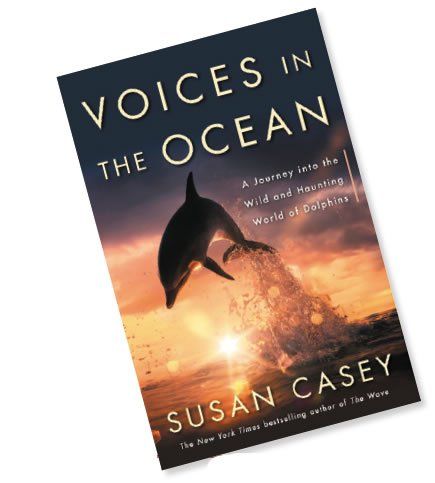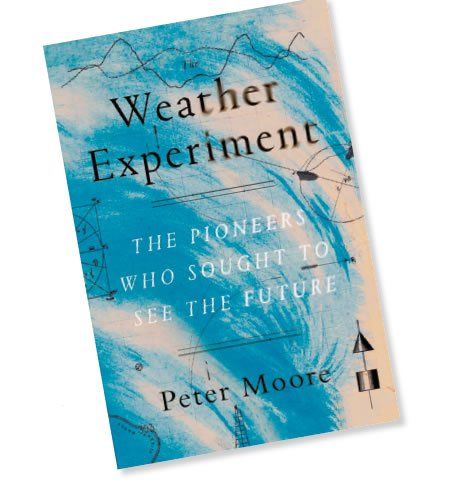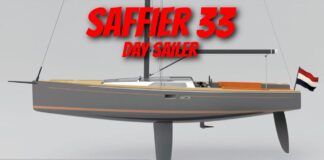



January is the high season for armchair sailing, and Practical Sailor editors have selected 10 books to help you navigate the winter storms of time.
Acclaimed naval adventure author David Poyer takes command in Tipping Point (St. Martins Press, 2015, $27 hardcover, $13 Kindle), the 15th installment in Poyers Capt. Dan Lenson series. The novel finds Lenson and his unique, antiballistic-capable cruiser, the USS Savo Island, under fire, both at sea and in Washington, D.C. Lensons command is threatened when hes called to testify before Congress and is threatened again when he returns to his damaged ship and increasingly divided crew. Lenson and the Savo Island are ordered to the Indian Ocean, where they suddenly become the only force standing between nations on the brink of nuclear war. Poyer draws from his own service and sea career to set the scene and sharpen the tension, and to bring to life the very real threat of nuclear war. Poyer has written more than 40 books, and the U.S. Naval Academy tapped his Captain Dan Lenson series as required reading in their Literature of the Sea course.
McGlue wakes in the hold onboard his ship, covered in blood and too drunk to remember the events of the night before. His impressive efforts at self-destruction are put on hold while he tries to determine whether he has brutally murdered his best friend. His journey toward sobriety, consciousness, and recollection is unflinchingly told by Boston-based, award-winning writer Ottessa Moshfegh in this story of murder and love amidst the reeky corners of mid-19th century New York and the dark, unforgiving spaces on the high seas. Moshfeghs first novel, McGlue (Fence Books, 2014, $16) was recently selected for the inaugural Fence Modern Prize in Prose.
The Assassins Honor (Pineapple Press, 2015, $14, $10 Kindle), by Robert N. Macomber, is the 12th installment in Macombers naval historical fiction Honor series, a series that follows the life and career of Lt. Cmdr. Peter Wake during the late 1800s and early 1900s. This installment finds Wake enjoying life after almost 30 years of service-that is until assassins strike aboard a steamer near Key West, Fla., and Wake must determine which world leader is the next target before time runs out. The Honor series received the 2008 Award for Excellence in Military Fiction. Each year, author Macomber travels approximately 15,000 global sea miles, giving lectures and researching his novels. Twice a year, he hosts an extremely popular history cruise, aboard the 47-foot ketch Alondra, out of Pine Island Sound in southwest Florida.
Nicholas A. Veronicos latest book on combat ships, Hidden Warships: Finding World War IIs Abandoned, Sunk, and Preserved Warships (Zenith Press, 2015, $20 hardcover, $15 Kindle), details the history of almost 50 World War II-era battleships, cruisers, and submarines that were sunk, scuttled, or run aground during the war. This globe-spanning effort to document these treasures of history takes us across oceans and into the far reaches of four hemispheres, with wrecks scattered from the Bering Sea, across the Pacific and Indian oceans, and down the coast of South America. Veronico has written extensively on World War II U.S. naval operations, on land and at sea, and is the author of six books.
New York Times bestselling author Susan Caseys life was forever altered during a sunset swim off the coast of Maui. For two years, Casey had existed in a state of dull indifference, shutting out the overwhelming grief of losing her father by dwelling in numbness. During a visit to Maui, she swam offshore at sunset and found herself surrounded by a pod of spinner dolphins. The profoundly transporting experience inspired her to embark on a two-year global adventure, exploring the nature of dolphins and their relationship to the world. Caseys Voices In The Ocean: A Journey Into the Wild and Haunting World of Dolphins (Doubleday, 2015, $17, $13 Kindle) describes the joy, the beauty, the mystery, and the very dark side of our connections to these beautiful creatures and their complex bond to humanity.
Peter Moore sets out to capture the excitement of the 19th century, a time of incredible intellectual and scientific progress, in his book The Weather Experiment: The Pioneers Who Sought to See the Future (Farrar, Straus, and Giroux, 2015, $16, $15 Kindle). He shows us just how radical the idea of weather forecasting was in the 1900s and tells the stories of visionary scientists, artists, inventors, and adventurers who set out to decode the skies, including famous figures such as Robert FitzRoy, officer of the Royal British Navy and captain of the HMS Beagle, and lesser known figures such as William Redfield and James Espy. FitzRoy became the first head of Britains Meteorological Department, where he established a far-reaching system of storm warnings and issued some of the worlds first forecasts. Espy became the United States first official meteorologist, but deeply dented his reputation by insisting he knew how to make it rain. The book includes at look at todays generation of scientists and how, a century later, they, too, work in a climate of uncertainty and skepticism.
One Wild Song: A Voyage in a Lost Sons Wake (Bloomsbury, 2015, $17 hardcover, $10 Kindle), by Paul Heiney, is the moving story about Heineys 18,000-mile voyage from England to Cape Horn and back, following the devastating loss of his son. Extraordinarily well-written with honesty, power, and surprising humor, the book is testament to the healing power of the sea amidst seemingly insurmountable grief.
How did the treacherous sharks on Ernest Hemingways big-game fishing trip inspire key scenes in The Old Man and the Sea? How did 17-year-old Jack Londons lone hour at the wheel of a schooner, thrashing about in a typhoon off the coast of Japan, set him on a course as one of the great adventure writers of his time? Sea Fever: True Adventures that Inspired our Greatest Maritime Authors, from Conrad to Masefield, Melville, and Hemingway (Adlard Coles, 2015, $18, $10 Kindle), written by Sam Jefferson, looks at the moments of real adventure that inspired great nautical writers. Jefferson recounts the lives of Joseph Conrad, Herman Melville, and other literary giants, and examines how their adventures and misadventures painted their literary masterpieces. The book ends fittingly with a final chapter on Robert Louis Stevensons South Seas voyages, and recounts how the Pacific and the islands were the first true home the author ever knew. Buried high on a hilltop in Apia, Stevensons famous epitaph is drawn from his poem Requiem and welcomes the sailor, home from the sea.
The Pentagon refers to it as the pervasive menace. It destroys ships, weakens docks, and fells bridges. It nearly brought down the Statue of Liberty. In Rust: The Longest War (Simon & Schuster, 2015, $13, $13 Kindle), by Jonathan Waldman, the author takes us on a compelling journey from Key West to Prudhoe Bay, Alaska, exploring the process that costs America more than $400 billion dollars a year. With astute and often humorous reporting, the rust ombudsman explores steelworks with an artist and the Alaska pipeline with a rust-seeking, high-tech robot. He meets a Defense Department ambassador who reveals that the U.S. Navys number one enemy is not on foreign soil, but in the ions of everyday corrosion. Waldmans nonfiction narrative illuminates this hidden phenomena that shapes the modern world, while simultaneously addressing the story of Western Civilization-the ambitions, the hubris, and the folly-and shows how our accomplishments are inescapably tied to decay.
Voyaging With Kids: A Guide to Family Life Afloat (Pardey Publications, 2015, $24, $24 Kindle), written by Behan Gifford, Sara Dawn Johnson, and Michael Robertson, offers advice on all aspects of life at sea with kids-from preparing the kids to moving aboard, homeschooling, staying safe, and staying healthy. It offers the perspective of three author voices, combined into one, and includes a final chapter written by 12 former cruising kids. Its a must read for those planning to cruise with kids or for those who think it can’t be done.






































